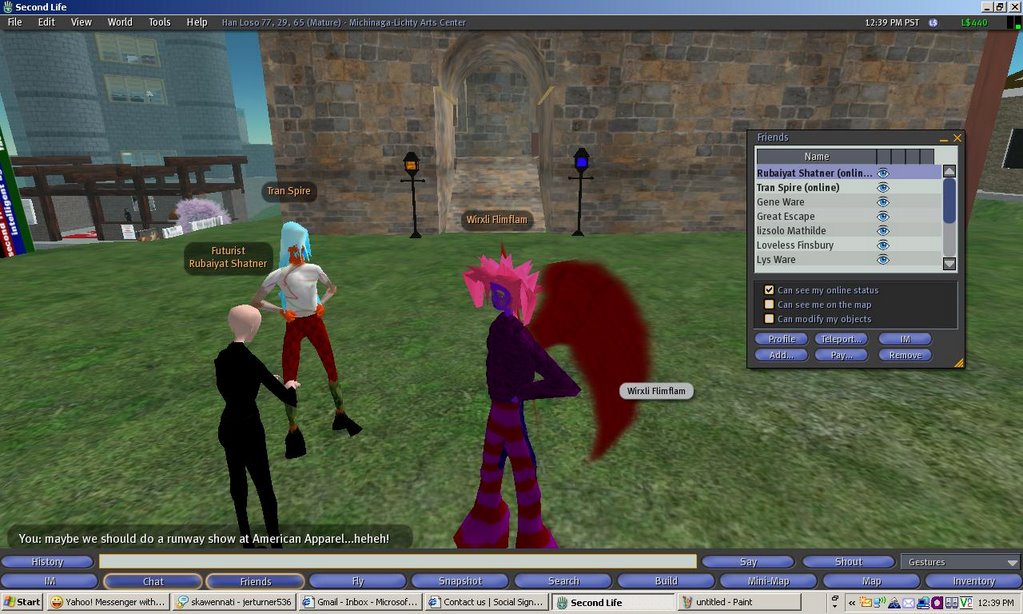The First Performance Art Group in Second Life
: the Second Front

Growing up in a number of virtual world games myself from Runescape to Maplestory, I can fully (or at least 90%) relate to their performances in the virtual world. Players use their imagination and creativity to also role-play. Some would even create a series of short films using the game’s environment, props and abilities.

The intention of companies creating these worlds is for participants to explore the spaces, interact with other players and at the same time, upgrade themselves through the level system. Players in Second Life, however, has no specific purpose. As what Linden Lab has emphasized on, “There is no manufactured conflict, no set objective”.
Hence, it was not surprising when I discovered what Second Front has been doing over the years. They have assembled interesting individuals and took advantage of the Second Life platform to do what they do best; perform. Everything in Second Life is customizable so there are endless possibilities of what they can come up with.
Performing in Second Life gives Second Front the opportunity to work at scales they would not normally be able to work in if done in the physical world. – Man Michinaga (Patrick Litchy), a member of Second Front
Although a script is needed for them to know the outline of their performances, coming up with an apt adlib adds on to the expression of the speech/gesture and appears natural. This should be an amusing experience for them and I bet they were laughing behind their screens when one of the member did it. Impromptu actions are the most memorable parts of a whole performance!

Performing in a virtual world also allows intervention from any unexpected players who happen to pass by. The audience is now part of the performance and the actual performer is now the viewer who observes what the audience does. This creates super-participation and role reversal!

Then comes the issue of identity. How far should we actually invest our money and time into a virtual avatar? Should it then be a representation of our real life identity? Or should it be totally separated from our own self? Even though other players are able to imitate our virtual avatar by dressing the same, you can not possibly replicate the characteristics and personality of someone (especially when it comes to witty comments). Hence, our online characters are much like an inner ego of ourselves.
My avatar is embedded in my psyche, rather than an extension of my self. – Great Escape (Scott Kildall), a member of Second Front
References
http://wirxliflimflam.blogspot.sg/
http://slfront.blogspot.sg/
https://odysseysimulator.com/tag/second-front/
http://rhizome.org/community/38893/
http://www.secondfront.org/About/index.html

Excellent Dina. You did a great job using the quotes to support your argument, and I think the screenshot captions were very informative. I thought the following was a very interesting statement:
This observation reminded me of what happens when we are performing in Facebook Live: we are in a virtual commons where anyone (at least friends) can pass by unexpectedly and interact with the performance. In the same sense, Second Live, like Facebook, is an open space, where people come and go, and not necessarily to experience a live performance, unless one just happens to occur. Then in a sense it becomes like street theater, taking theater out of the traditional venue and putting it into an entirely new space. So what result does that have, how does the “pop-up” performance change and challenge the way we experience live performance?